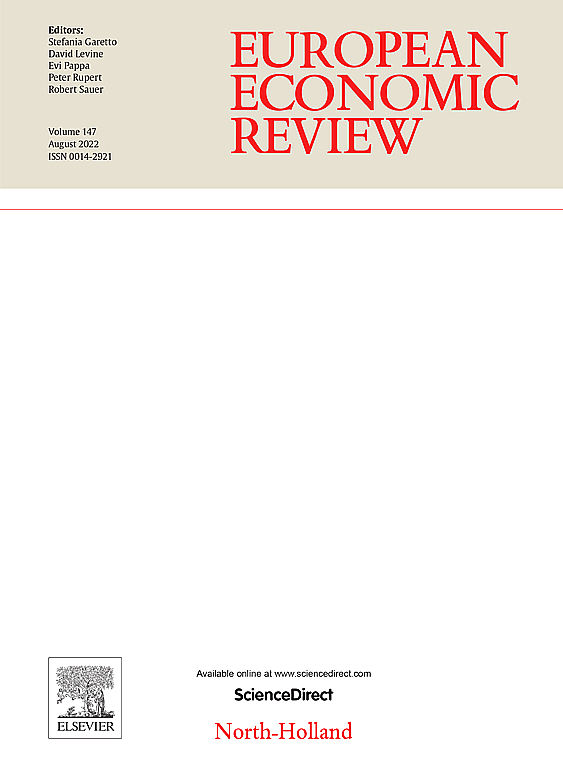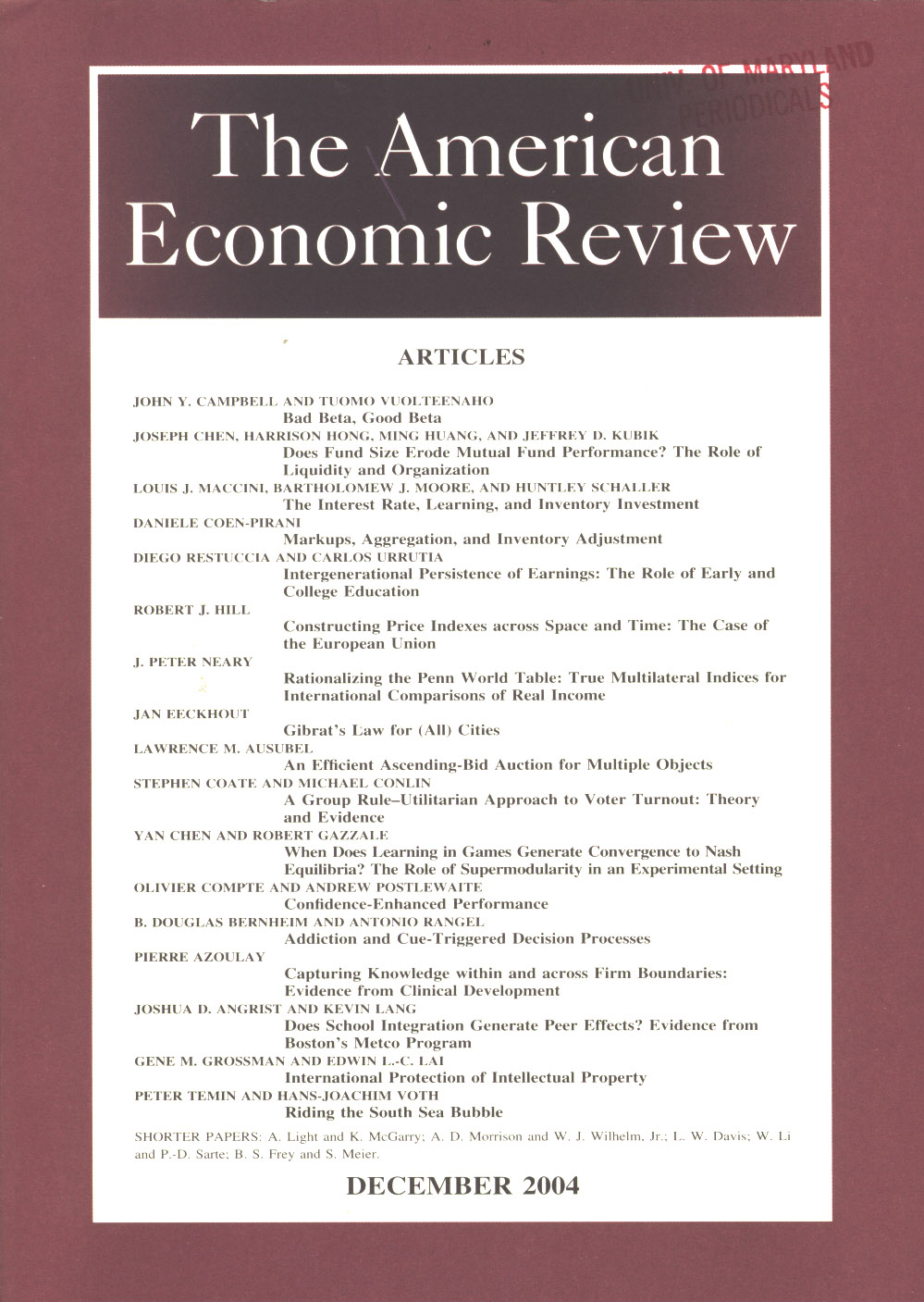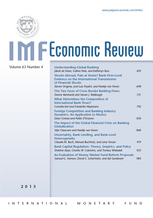Entrepreneurship, Innovation, and Productivity Growth
This group tackles research topics that are of relevance for our understanding of patterns of innovation and productivity growth and explores implications for workers and firms. Areas of particular focus include the decline in business dynamism, the growth in automation, entrepreneurship and innovation, and supply chains.
Research Cluster
Productivity and InstitutionsYour contact

Mitglied - Department Structural Change and Productivity
Refereed Publications

Where Has All the Skewness Gone? The Decline in High-growth (Young) Firms in the U.S.
in: European Economic Review, July 2016
Abstract
The pace of business dynamism and entrepreneurship in the U.S. has declined over recent decades. We show that the character of that decline changed around 2000. Since 2000 the decline in dynamism and entrepreneurship has been accompanied by a decline in high-growth young firms. Prior research has shown that the sustained contribution of business startups to job creation stems from a relatively small fraction of high-growth young firms. The presence of these high-growth young firms contributes to a highly (positively) skewed firm growth rate distribution. In 1999, a firm at the 90th percentile of the employment growth rate distribution grew about 31 percent faster than the median firm. Moreover, the 90−50 differential was 16 percent larger than the 50−10 differential reflecting the positive skewness of the employment growth rate distribution. We show that the shape of the firm employment growth distribution changes substantially in the post-2000 period. By 2007, the 90−50 differential was only 4 percent larger than the 50−10, and it continued to exhibit a trend decline through 2011. The overall decline reflects a sharp drop in the 90th percentile of the growth rate distribution accounted for by the declining share of young firms and the declining propensity for young firms to be high-growth firms.

Declining Business Dynamism: What We Know and the Way Forward
in: American Economic Review: Papers and Proceedings, No. 5, 2016
Abstract
A growing body of evidence indicates that the U.S. economy has become less dynamic in recent years. This trend is evident in declining rates of gross job and worker flows as well as declining rates of entrepreneurship and young firm activity, and the trend is pervasive across industries, regions, and firm size classes. We describe the evidence on these changes in the U.S. economy by reviewing existing research. We then describe new empirical facts about the relationship between establishment-level productivity and employment growth, framing our results in terms of canonical models of firm dynamics and suggesting empirically testable potential explanations.

Private Equity, Jobs, and Productivity
in: American Economic Review, No. 12, 2014
Abstract
Private equity critics claim that leveraged buyouts bring huge job losses and few gains in operating performance. To evaluate these claims, we construct and analyze a new dataset that covers US buyouts from 1980 to 2005. We track 3,200 target firms and their 150,000 establishments before and after acquisition, comparing to controls defined by industry, size, age, and prior growth. Buyouts lead to modest net job losses but large increases in gross job creation and destruction. Buyouts also bring TFP gains at target firms, mainly through accelerated exit of less productive establishments and greater entry of highly productive ones.

The Role of Entrepreneurship in US Job Creation and Economic Dynamism
in: Journal of Economic Perspectives, No. 3, 2014
Abstract
An optimal pace of business dynamics—encompassing the processes of entry, exit, expansion, and contraction—would balance the benefits of productivity and economic growth against the costs to firms and workers associated with reallocation of productive resources. It is difficult to prescribe what the optimal pace should be, but evidence accumulating from multiple datasets and methodologies suggests that the rate of business startups and the pace of employment dynamism in the US economy has fallen over recent decades and that this downward trend accelerated after 2000. A critical factor in accounting for the decline in business dynamics is a lower rate of business startups and the related decreasing role of dynamic young businesses in the economy. For example, the share of US employment accounted for by young firms has declined by almost 30 percent over the last 30 years. These trends suggest that incentives for entrepreneurs to start new firms in the United States have diminished over time. We do not identify all the factors underlying these trends in this paper but offer some clues based on the empirical patterns for specific sectors and geographic regions.

How Firms Respond to Business Cycles: The Role of Firm Age and Firm Size
in: IMF Economic Review, No. 3, 2013
Abstract
There remains considerable debate in the theoretical and empirical literature about the differences in the cyclical dynamics of firms by firm size. This paper contributes to the debate in two ways. First, the key distinction between firm size and firm age is introduced. The evidence presented in this paper shows that young businesses (that are typically small) exhibit very different cyclical dynamics than small/older businesses. The second contribution is to present evidence and explore explanations for the finding that young/small businesses were hit especially hard in the Great Recession. The collapse in housing prices accounts for a significant part of the large decline of young/small businesses in the Great Recession.
Working Papers

Early-Stage Business Formation: An Analysis of Applications for Employer Identification Numbers
in: NBER Working Paper, No. 24364, 2018
Abstract
This paper reports on the development and analysis of a newly constructed dataset on the early stages of business formation. The data are based on applications for Employer Identification Numbers (EINs) submitted in the United States, known as IRS Form SS-4 filings. The goal of the research is to develop high-frequency indicators of business formation at the national, state, and local levels. The analysis indicates that EIN applications provide forward-looking and very timely information on business formation. The signal of business formation provided by counts of applications is improved by using the characteristics of the applications to model the likelihood that applicants become employer businesses. The results also suggest that EIN applications are related to economic activity at the local level. For example, application activity is higher in counties that experienced higher employment growth since the end of the Great Recession, and application counts grew more rapidly in counties engaged in shale oil and gas extraction. Finally, the paper provides a description of new public-use dataset, the “Business Formation Statistics (BFS),” that contains new data series on business applications and formation. The initial release of the BFS shows that the number of business applications in the 3rd quarter of 2017 that have relatively high likelihood of becoming job creators is still far below pre-Great Recession levels.













